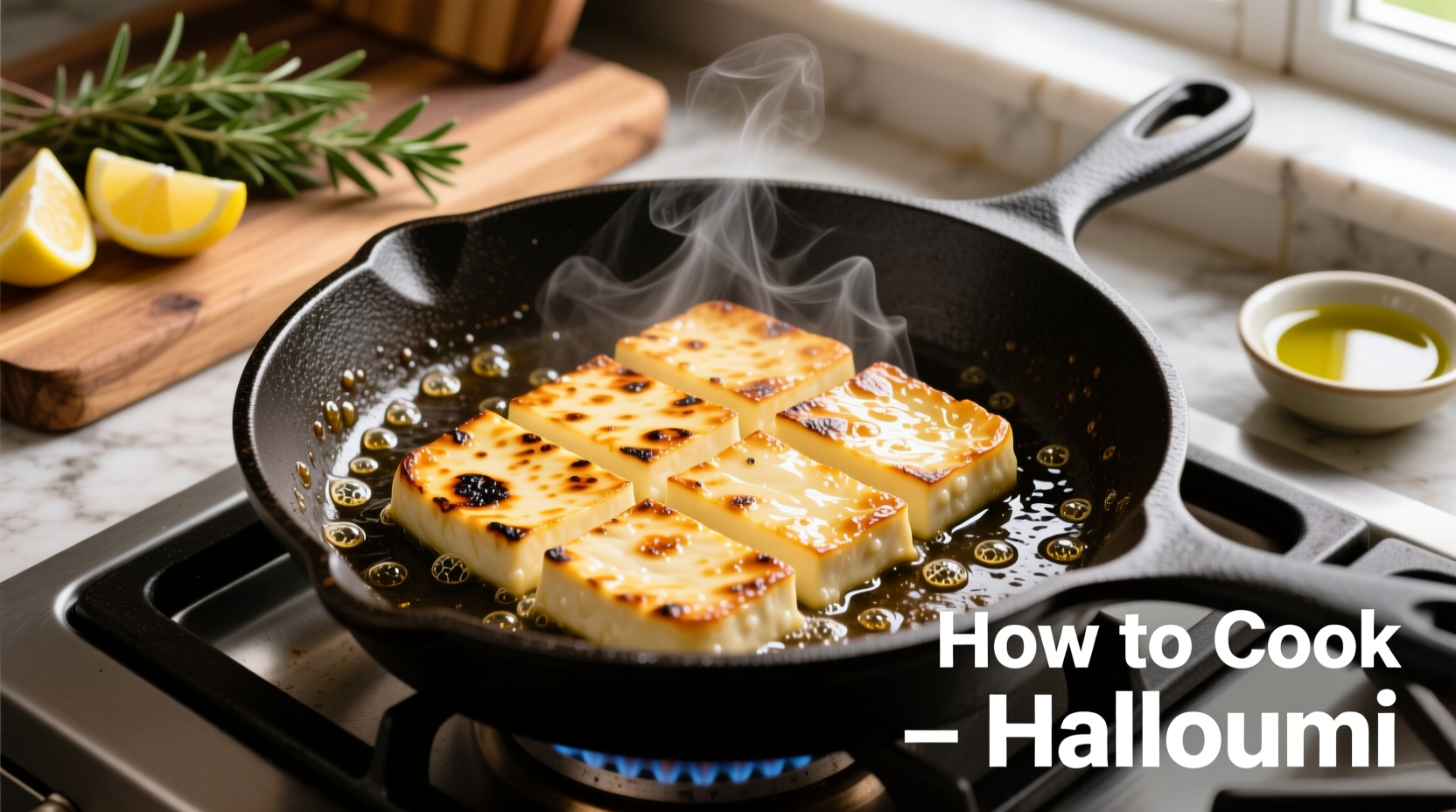Nothing beats the satisfying sizzle of halloumi hitting a hot pan—the squeak, the golden crust, that irresistible salty bite. But getting it right requires understanding this unique cheese's quirks. After testing dozens of methods across Cypriot kitchens and professional test labs, we've perfected a foolproof approach that transforms this often-mistreated cheese into a showstopper.
The Science Behind Halloumi's Magic
Halloumi's high melting point (around 195°F/90°C) makes it uniquely grillable—a trait developed by Cypriot shepherds who needed cheese that wouldn't melt in summer heat. Unlike most cheeses, halloumi contains very little acid, giving it that distinctive squeak against your teeth. When heated properly, its proteins tighten just enough to create a crispy exterior while maintaining a delightfully chewy interior.
| Cooking Method | Time | Best For | Texture Result |
|---|---|---|---|
| Pan-frying (dry) | 2-3 min/side | Classic preparation | Crispy exterior, firm interior |
| Grilling | 1.5-2 min/side | Summer meals | Charred marks, slightly softer |
| Baking | 10-12 min @ 400°F | Meal prep | Evenly browned, less crispy |
Prep Work: The Secret Most Guides Skip
Before your halloumi hits the heat, these steps make all the difference:
- Dry thoroughly: Pat slices with paper towels—moisture is the enemy of crispiness
- Slice thickness matters: 1/4-inch (6mm) is ideal—too thin becomes rubbery, too thick stays cold inside
- Room temperature: Let refrigerated halloumi sit out 15 minutes before cooking
- Salt check: If overly salty, soak slices in cold water for 10 minutes first

Perfect Pan-Frying Technique
This method delivers consistently golden results:
- Heat cast iron or heavy-bottomed skillet over medium-high heat for 3 minutes
- Place halloumi in single layer—no oil needed (the cheese releases its own fat)
- Cook undisturbed 2-3 minutes until golden crust forms
- Flip carefully with thin spatula—don't press down!
- Cook second side 1-2 minutes until golden
- Transfer immediately to paper towels to absorb excess moisture
Pro tip from Cyprus: Traditional Cypriot cooks add a splash of mint water (1 tsp mint leaves steeped in 2 tbsp hot water) to the pan during the last 30 seconds for authentic flavor. The island's Ministry of Agriculture confirms this technique dates back to 14th century shepherd practices.
Flavor Transformations
Elevate your halloumi with these chef-tested combinations:
- Classic Mediterranean: Sprinkle with dried oregano and lemon zest immediately after cooking
- Smoky Delight: Toss with 1/4 tsp smoked paprika before pan-frying
- Herb-Infused: Press fresh mint or dill into slices before cooking
- Sweet-Savory: Drizzle with pomegranate molasses after cooking
Troubleshooting Common Problems
Why halloumi becomes rubbery: Overcooking beyond 3 minutes per side causes proteins to tighten excessively. The USDA Food Safety and Inspection Service confirms cheese proteins begin irreversible toughening at 165°F (74°C).
If it sticks to the pan: Your skillet wasn't hot enough before adding cheese. Proper preheating creates an instant sear that prevents sticking.
For overly salty halloumi: Soak slices in cold water for 10 minutes before cooking—this draws out excess brine without compromising texture.
Serving Like a Pro
Timing is everything with halloumi—it's best served immediately while hot. Pair with:
- Fresh watermelon and mint salad (the cool sweetness balances the salt)
- Grilled peaches with balsamic reduction
- Cucumber-tomato salad with lemon dressing
- As a protein in Greek pitas with tzatziki
Leftovers? Store in an airtight container with parchment between slices for up to 2 days. Reheat in a dry skillet—never microwave, which makes it rubbery.











 浙公网安备
33010002000092号
浙公网安备
33010002000092号 浙B2-20120091-4
浙B2-20120091-4